Reviews 9 min read
We put Honda’s first-ever hybrid version of the new fifth-generation CR-V to the test
'Unremarkable' is the word best used to describe the Honda CR-V Hybrid but as petrol-electric SUVs go it is comfy, practical, spacious and packed with tech.
Discover EV expert verdict...
- Economical alternative to petrol
- Comfortable ride
- Spacious
- No seven-seat option
- Only rated up to 750kg for towing
- Poor infotainment system
Overview
Did you know the world’s best-selling SUV is the Honda CR-V? It surprised us too. It is the kind of car that blends into the background but when you start to purposefully look for one, you’ll realise they’re everywhere – especially at school drop-off. The first generation model was introduced way back in 1995 and things have changed a lot since then… Now in its fifth generation, the CR-V completely shuns diesel (since the dieselgate crisis, sales of Honda’s oil-burning CR-Vs have been tumbling) meaning your drivetrain options are turbo petrol, with either a manual or CVT gearbox, or this – a hybrid version that pairs two electric motors with a 2.0-litre petrol engine. We spent a week with a (bear with me here, it’s a mouthful) Honda CRV 2.0i-MMD Hybrid SR - AWD eCVT to find out what it’s like.
Driving
Honda say that new i-MMD hybrid is its most important powertrain in ten years, yet it has disappointing fuel economy and CO2 emissions (more on that later). That said the system is very clever – but also quite complicated so feel free to switch off.
For those still reading, the system operates a 2.0-litre i-VTEC Atkinson-cycle petrol engine, two electric motors, a small lithium-ion battery and a single speed reduction gear in place of a transmission. This enables the car to seamlessly switch between three modes, depending on the demands of the environment and how heavy your right foot is. It produces 143bhp, and acceleration from 0-62mph takes 8.8 seconds in FWD cars and 9.2 seconds in AWD cars, with both sharing a top speed of 112mph.
These modes comprise of EV Drive, where the lithium-ion battery supplies power to the electric propulsion motor directly; Hybrid Drive, where the engine supplies power to an electric generator motor, which in turn supplies it to the electric propulsion motor; and Engine Drive, where the engine is connected directly to the wheels via a lock-up clutch.
Most of the time we found that the car shuffled between Hybrid Drive and EV Drive, while Engine Drive came in when cruising at higher speeds. Honda say that at 40mph the CR-V Hybrid will typically run in EV Drive for more than half of the time, and at 62mph approximately one third of the time, however during our time with the car the EV Drive mode only seemed to run in slow-moving traffic or when manoeuvring. What we will say is that it is very quiet in comparison to other hybrids, only resorting to apparent over-revving when you’re close to the pedal stop. Also, rather than using a conventional transmission, a single fixed-gear ratio creates a direct connection between moving components, and compared to the other set-ups it felt more refined and smoother.
Interestingly the CR-V Hybrid is equipped with a Deceleration Paddle Selector system, which allows the driver to adjust the car's rate of deceleration using paddles behind the steering wheel. Pulling back the left paddle slows down the car more quickly, while the same action on the right slows down the car more gently.
Still with us? Great. Let’s talk handling. The all-new CR-V is based on Honda’s latest chassis design which is lighter and more rigid than ever before, and it is more refined and engaging compared to its predecessor – it’s certainly not sporty but that’s not why people buy a CR-V. The all-new suspension delivers a comfortable and quieter driving experience and that’s what owners want. It just gets on with the job, without being particularly exciting or involving.
We had the AWD model on test which offers higher ground clearance than its predecessor with no impact on the centre of gravity. Software updates to the AWD system result in the ability to now send up to around 60 per cent of torque to the rear wheels when required as well as an overall increase in torque through the system. Thanks to a multi-plate clutch the AWD system is also able to disconnect for higher efficiency when rear-wheel torque is not required. Combined the result is improved performance in low-traction conditions, as well as better off-road capability – although we’ll just have to take Honda’s word on that one as we didn’t venture off the black stuff.
Range and running costs
By intelligently shuffling between power sources it provides the highest possible efficiency. Official average fuel economy based on the latest WLTP testing procedure is 40.9 and while Honda reckons it’s more efficient than Toyota’s set-up, the RAV4 hybrid is rated at up to 50.4mpg. Unusually, the CR-V Hybrid matched or bettered its official economy while on test, returning up to 46mpg around town and round 40mpg on the motorway. We’ve yet to test the Toyota RAV4, but if its figures are optimistic it could well be on a par.
The CR-V will make plenty of sense for company car buyers, as its low CO2 emissions place it in competitive Benefit in Kind groups with 120g/km (the 2WD version) based on NEDC-correlated figures. Even so, growing demand for SUVs has meant that it’s now the second largest contributor to the increase in global CO2 emissions from 2010 to 2018 (full analysis here), so the sooner Honda e comes to the market the better.
EV Drive permits pure-electric propulsion and gives the CR-V a zero-emissions range of around 1.2 miles (2km) depending on the driving condition and battery charge, which isn’t great when you compare it to a PHEV. The bottom line is that hybrids do consume less fuel and emit less CO2 than a comparable conventional petrol or diesel-engined vehicle, and if you frequently drive in busy towns, the technology reduces the workload on the diesel engine, reducing your running costs. Road tax is also lower for self-charging hybrids and as mentioned they can make affordable company cars with lower CO2. If you aren’t able to charge a plug-in hybrid regularly, then a self-charging hybrid is the better option for you.
Design
While it retains its familiar CR-V silhouette, broader wheel arches and sharper contours on the bonnet and rear quarters, as well as the latest Honda signature headlight shape helps to make it look more dynamic even if it isn’t when behind the wheel. The wheelbase has been increased by 30mm to create more space inside but also contributes to the more muscular stance, with the larger-diameter wheels and tyres now placed closer to each corner.
Inside, the drive selector controls for the new Honda CR-V Hybrid are positioned in the centre console, with a design that uses a compact switch-style transmission selector rather than a conventional lever and it works well. The 5 inch entry-level infotainment system on S models is extremely basic – you’re better off going for an SE model (or higher) which get a 7 inch touchscreen with sat-nav, DAB radio, Bluetooth, Apple CarPlay and Android Auto. You’ll be thankful for smartphone mirroring alone, because the Honda’s system is difficult to navigate, laggy and unrefined.
Comfort and practicality
The engineers at Honda have worked hard to minimise noise and vibration and make the best use of space, and when you combine that with improved ride comfort it’s a far nicer place to be than the outgoing model. In a nutshell, it’s a roomy, comfortable and solid-feeling cabin.
An all-new instrument binnacle, featuring a 7 inch LCD Driver Information Interface (DII) central display, flanked by battery charge status and fuel-level gauges. The CR-V Hybrid’s DII includes what Honda calls a ‘content zone’, which can pull up a variety of information (including navigation instructions, audio track information, smartphone contacts, all-wheel-drive system status, and smart vehicle maintenance information) by the driver scrolling via thumbpad controls on the left spoke of the steering wheel. It’s designed to minimise distractions but we found it too fiddly.
It also features a graphic of the current power flow, indicating the vehicle’s power source at any given moment, status updates on if the battery is being charged, and an ‘ECO Guide’ to suggest more efficient driving techniques. Talking of which if you’re a bit competitive you can play a little game with your partner – when you monitor your efficiency over time you get a drive cycle score, earning points depicted by leaf icons in the display that increase or decrease according to what fuel economy you achieve. It’s fair to say my husband is a lot better at this than I am!
With the lithium-ion batteries under the floor it means there’s no room for the third row of seats, so frustratingly you can’t go seven-up like you can in the petrol. On the upside it does at least have a new three-mode centre console (that can be configured depending on what you want to store), extra-large capacity door pockets (48 per cent longer at front and 63 per cent longer at the rear), plentiful rear leg room, plus a wider, deeper boot with a longer load bay (an impressive 497 litres with the seats up)
There are four trim levels S, SE, SR and EX, and standard across all trim grades are safety features such as auto emergency braking with forward collision warning, lane keep assist, lane departure warning, road departure mitigation, adaptive cruise control and traffic sign recognition. Yesteryear wood trim fitted to every model and scratchy lower plastic panels could be improved upon, and if you want leather seats you need to step up to SR trim.
Verdict
Super-sensible, practical and with a hybrid powertrain that offers better drivability than its petrol-electric rivals, the Hybrid is an even more rational proposition for existing Honda CR-V customers. While not as efficient on paper, it is still a compelling alternative to its only rival the Toyota RAV4 Hybrid. If you fancy a slice of gentle, green-ish family motoring then don't let the £37,000 price tag of our test car put you off the idea with the entry-level FWD version (which is more economical than the rear-driven version) coming in at £30,130.
Key Specs
2019 Honda CRV 2.0i-MMD Hybrid SR – AWD eCVT
Price (RRP OTR): From £35,570 (AWD); (car tested): £36,120
Top speed: 112 mph
0-62mph: 9.2 seconds
Max power: 143hp
Max torque (combined): 179lb-ft
Combined fuel consumption (WLTP): 40.9mpg
CO2 emissions (NEDC): 126g/km
Insurance group: 22-24
Warranty: Three years or 90,000 miles
Thank You
Discover EV would like to thank Kenward Trust in Kent for letting us photograph the Honda CR-V Hybrid outside of Kenward Place. For more details go to https://www.kenwardtrust.org.uk/.

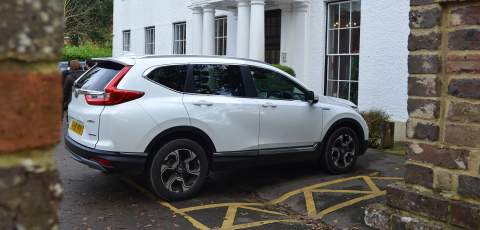


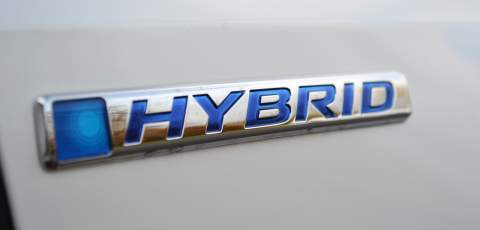
_480px.jpg)
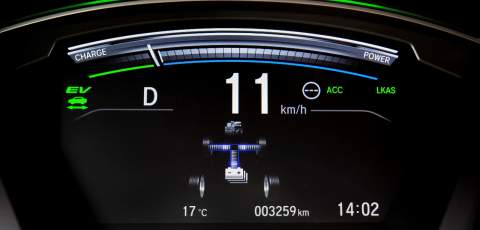
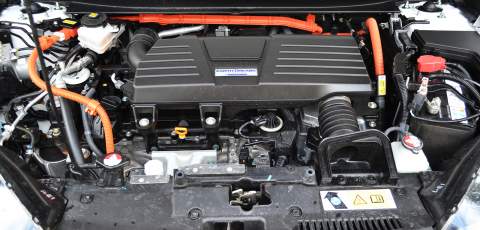
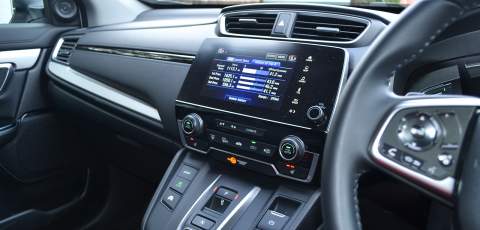
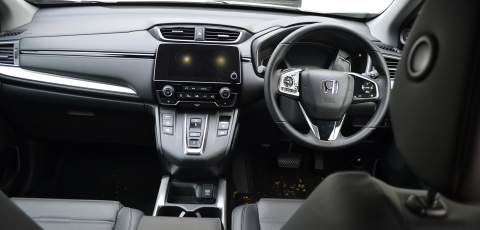
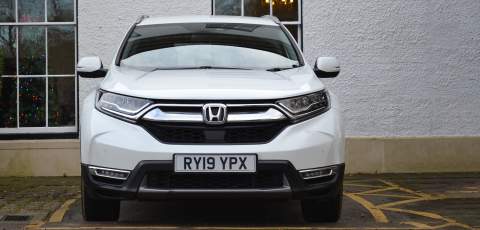
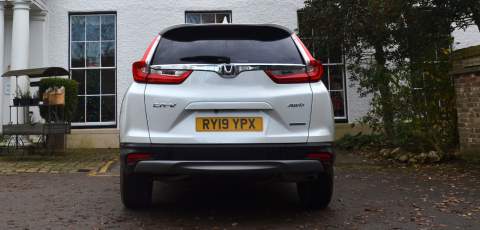
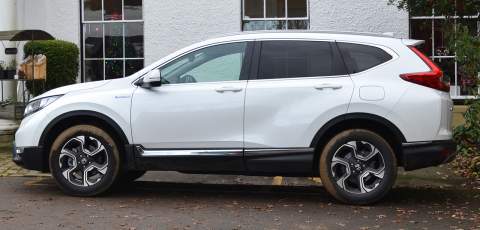
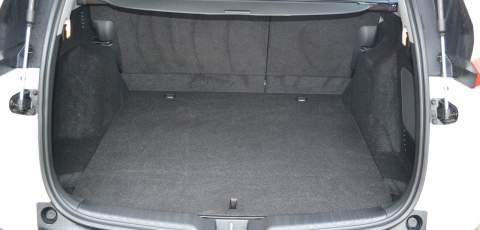
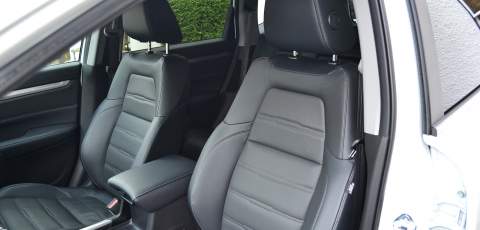

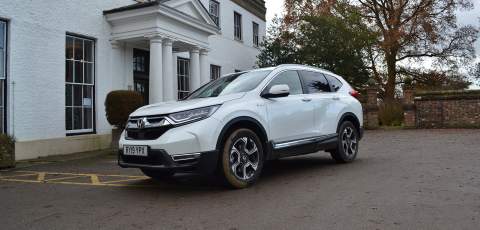

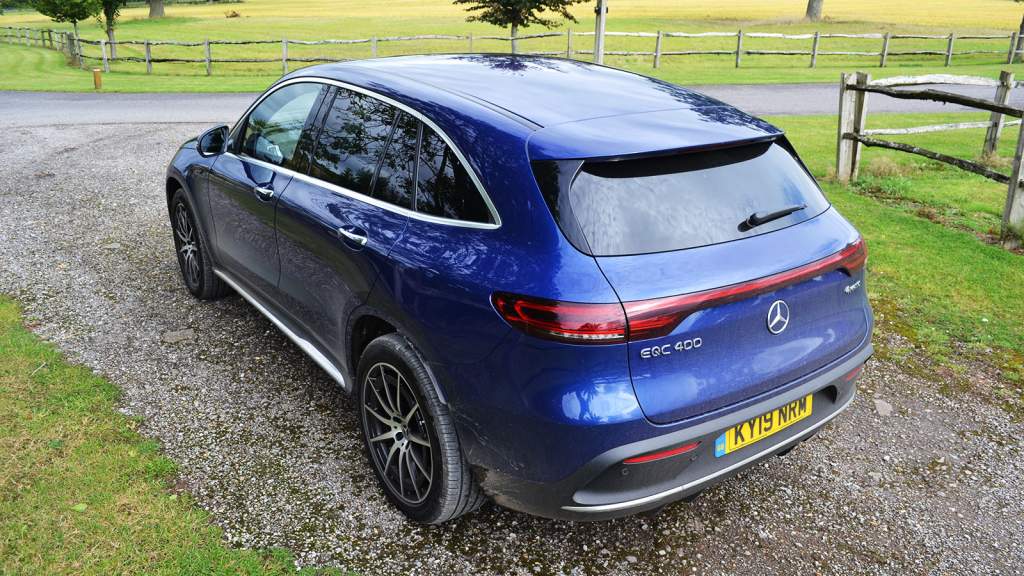
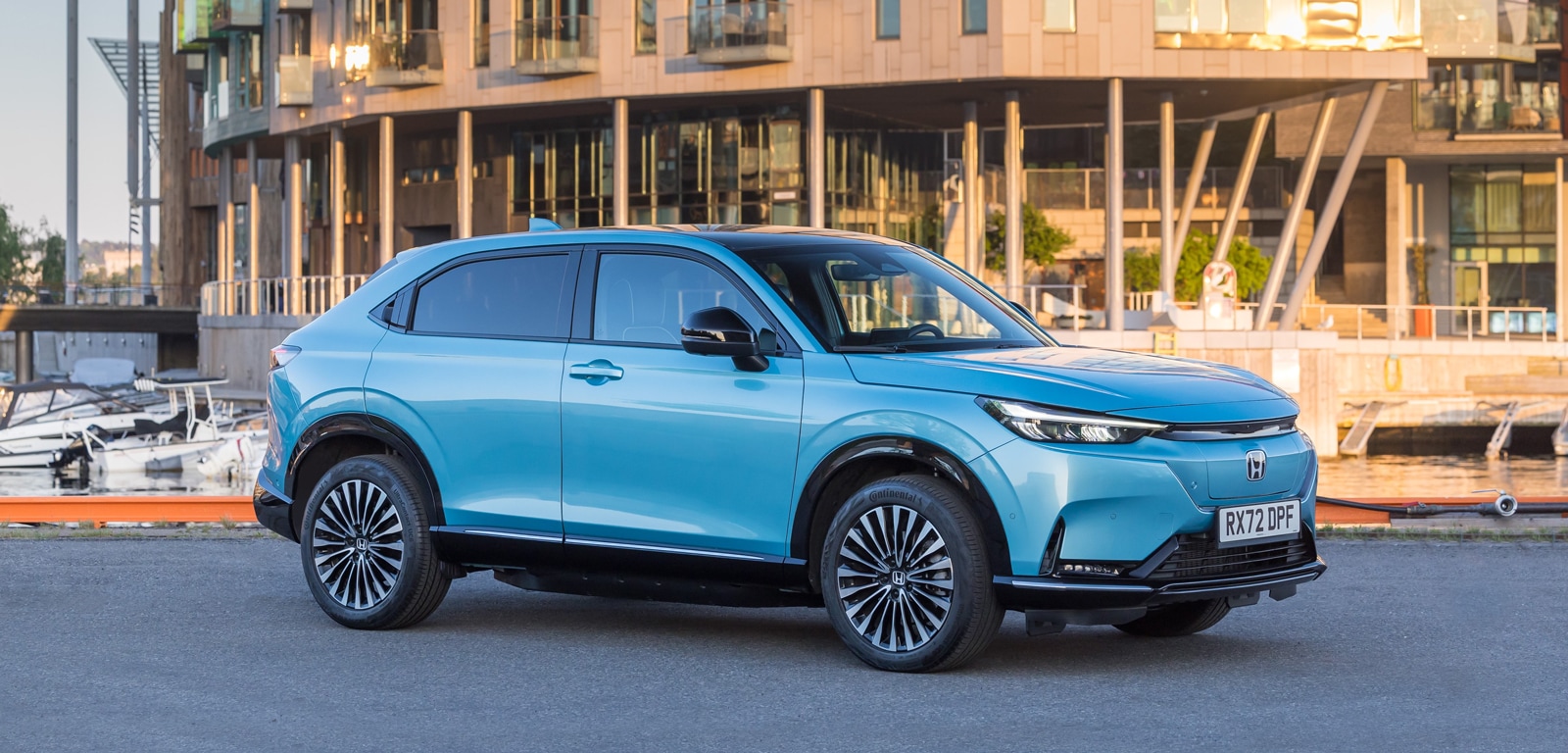
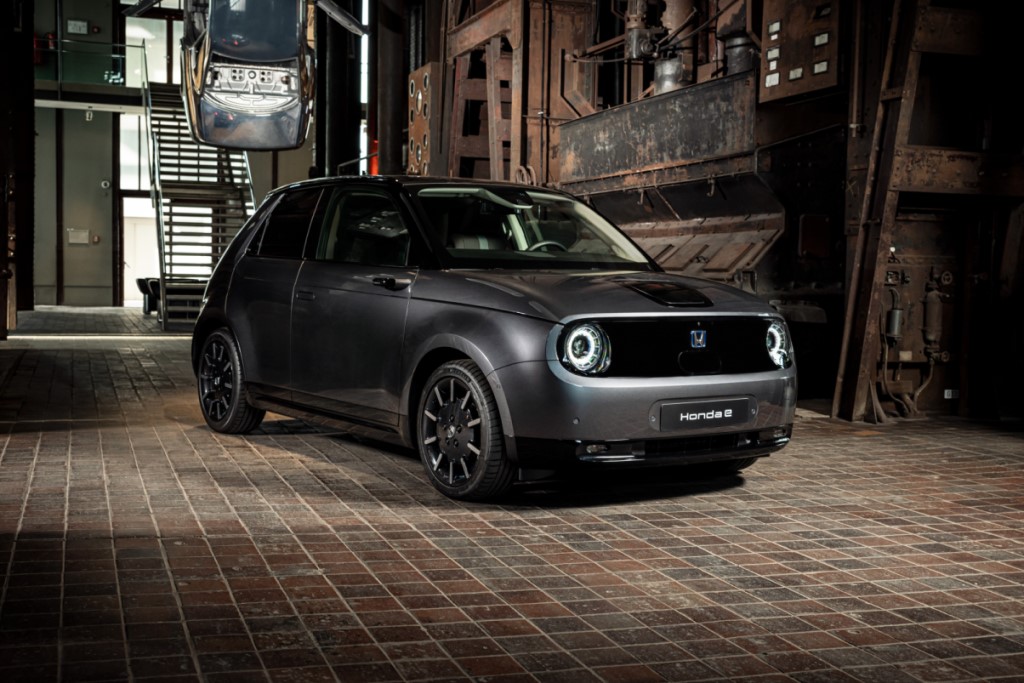
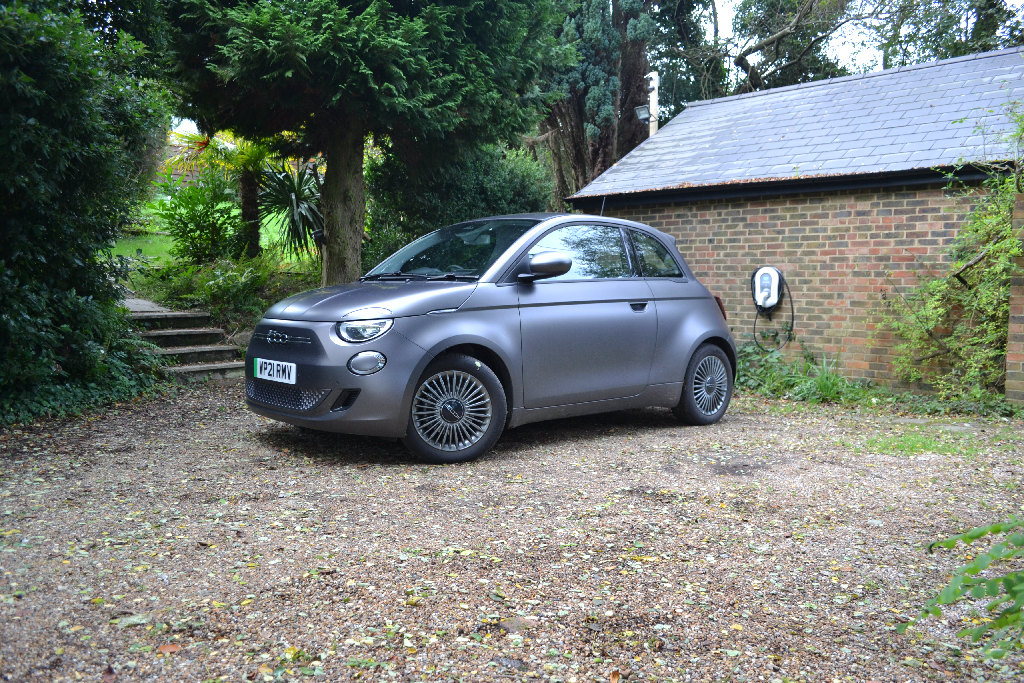



Comments (0)
Be the first to write a comment
Login/ Signup